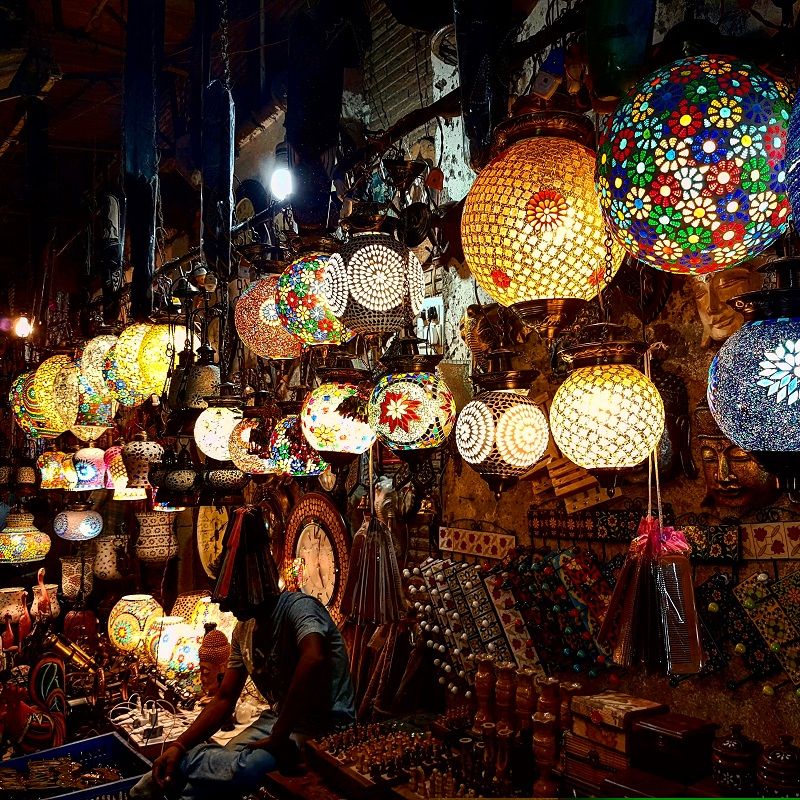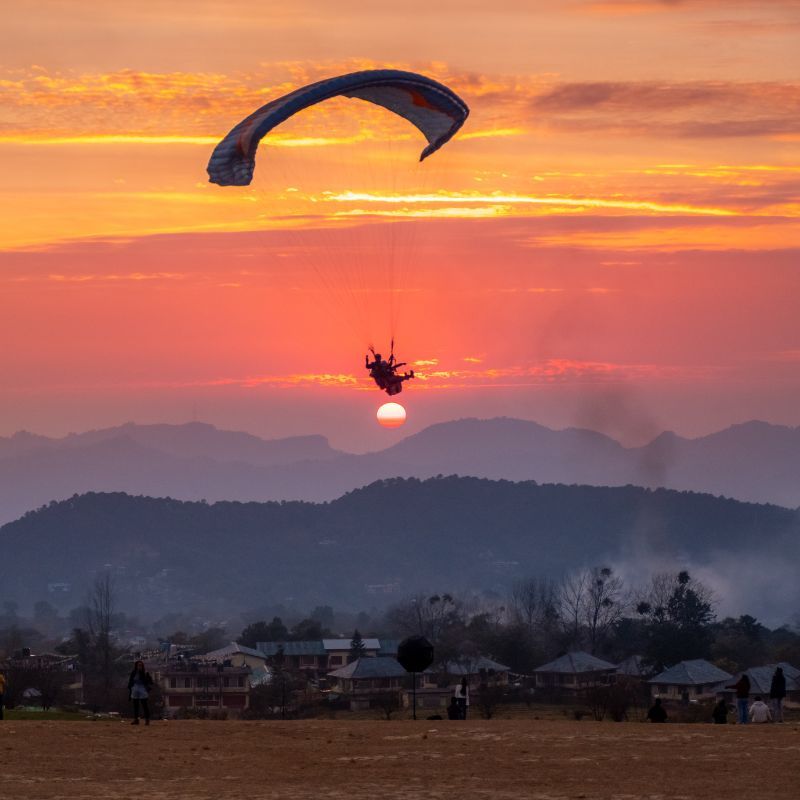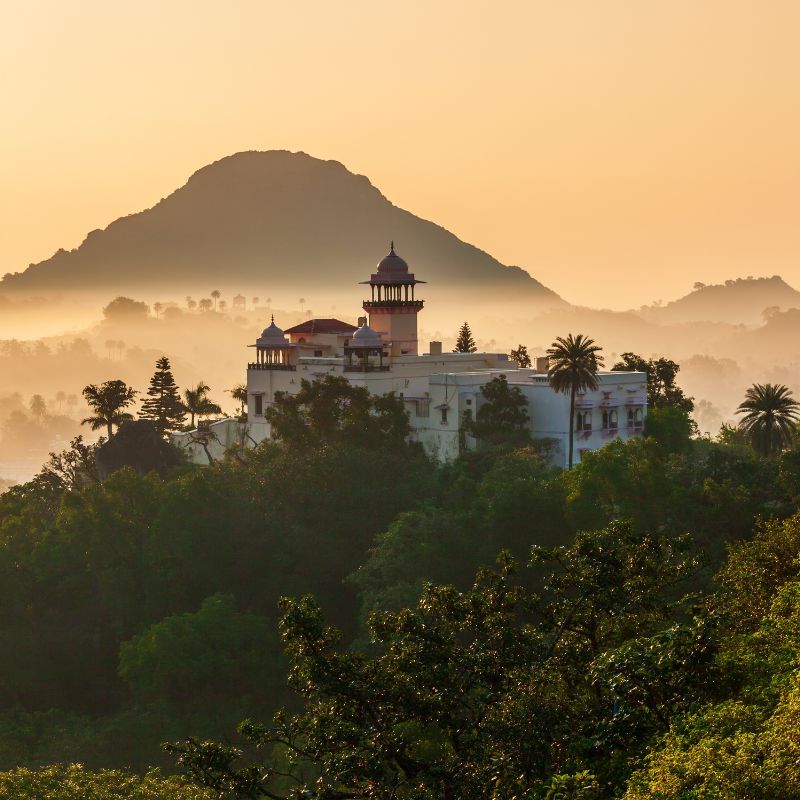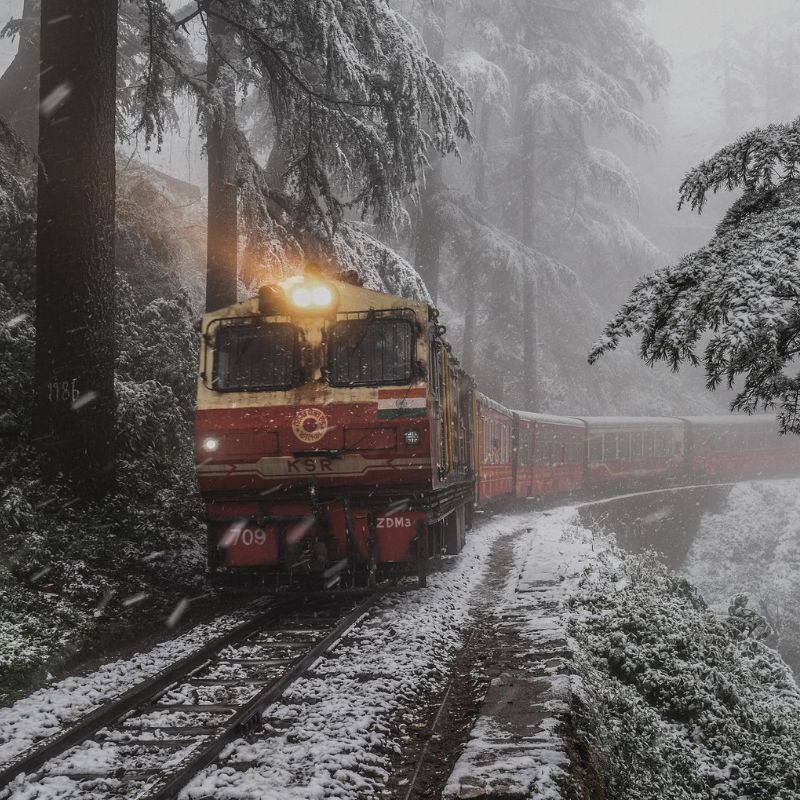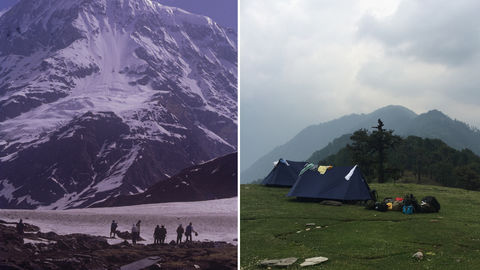
The Pindari Glacier in the upper reaches of Uttarakhand demands sincere endeavours by serious trekkers for the extraordinary views it offers. By Sathya Saran
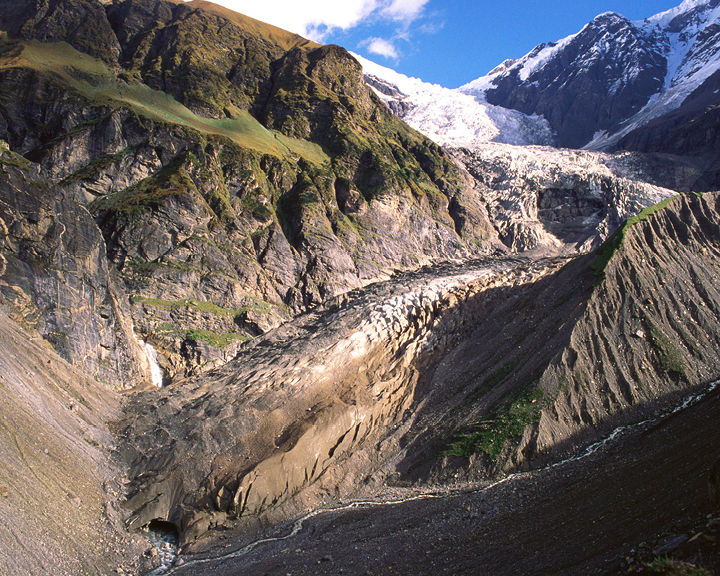
If i had known what 1,000 metres up meant, I might have had second thoughts about embarking on my adventure. It was not too late; I could still give up and turn back. But the call of Pindari Glacier was strong, so I tried my best to ignore the signals that my body was sending out in no uncertain ways.
Pindari… In a geography textbook that bored the schoolgirl in me to tears, it had been the one chapter I had read avidly. Perhaps the photographs of the icy glacier winding down from snowy peaks entranced me, but I nurtured a secret desire to set foot on Pindari some day. That it could be done was also evident. Of course, as a student who thought geography was a bore, I had no awareness of where Pindari was or about how one could get to it, but the word held its magic, and buried itself into my subconscious.
The universe was obviously eavesdropping. And so, 40 or more years later, here I was on my way to realising my dream, as I toiled up, step after breathless step, on the first day of my trek.
A day earlier we had driven from Kathgodam station (which connects New Delhi to the Himalayan mountains) in Nainital district, Uttarakhand for two days to reach Loharkhet (1,760 metres) where a rather basic Kumaon Mandal Vikas Nigam Ltd. guest house building gave us shelter. Tantalising views of snow-capped peaks, which revealed themselves at our first night halt at a roadside guest house in the tiny village of Deenapani had stirred the impatience in me. But the road through the mountains will not be hurried, and when it finally took us to Bageshwar, we bore the brunt of a hot afternoon as we grabbed our lunch and started out for Loharkhet. The road petered out at Song village where we had to transfer our bags into a 4by4 that would take us up the rest of the way.
After a hair-raising ride through tracks that begged to be known as motorable roads, we breathed easy as we sat in the shadow of the mountains. The peaks were hidden but the sky was full of stars. Far away below us, an occasional electric bulb shone its greeting, till the moon rose to outshine everything else.
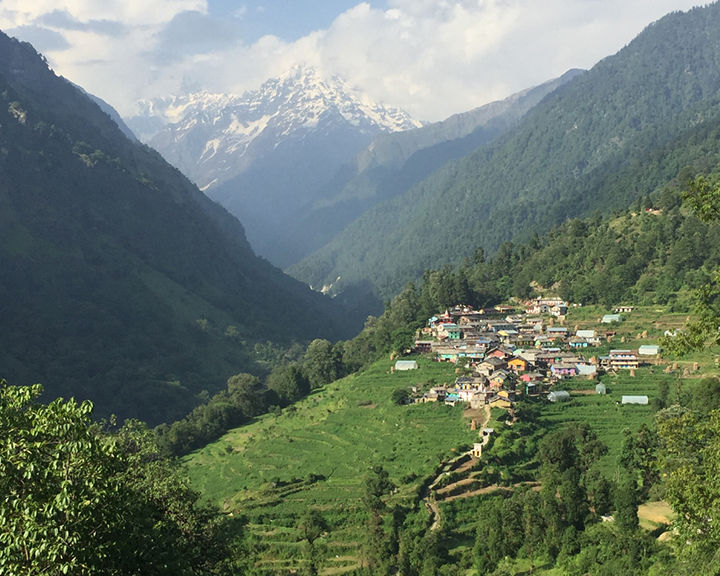
Birdcall and soft sunlight ensured we woke up early, and after a quick but hearty breakfast, started out for our first halt, Dhakuri. At 2,680 metres, Dhakuri is a 11 km walk from Loharkhet. The road is paved with stone steps, some of which are knee benders. Little wonder, a desk bound, city girl like me was soon panting like a locomotive engine at full steam. The knees were still fine, but the thighs were articulating strong protests.
Stopping to look at the scenes around us is one way of letting the body regain control of itself. Tiny flowers blush uncaring about whether they get admired, the grass is flecked with white, purple, and pink. Stars of the earth I think. Ants busy in their daily routine hurry along the steps, bees buzz by. The forest around us is alive and well, engrossed in itself. The rhododendron flowers stand like candlestick offerings to the heavens that are sprinkled with white clouds.
I am told by the porters who are driving the mules carrying our bags up that the sky will change its mood by early afternoon and rain thunderously on us. There is need to hurry. So we go on, up and still higher, across hillsides and past meadows that invite us to linger. The air is sometimes spiced with the sounds of bells as the mules trudge past us.
Modest stopping points along the way offer noodles; energy restored we carry on in one last burst to where the ground levels off, slopes down at last and leads us to Dhakuri just as the first large rain drops make their appearance. By the time we are bathed and clean of all signs of the day’s labours, the rain has performed an orchestration of sound and light of astounding megabytes.

The rooms at Dhakuri are basic. Wooden cots line the walls and there are piles of rough quilts filled with untreated wool. Forewarned is forearmed and we cover our legs with insect repellent to discourage any denizens the quilts may be harbouring. The storm has passed by dinner time and I go to sleep holding close the ethereal first look at a snow peak standing silent over us while the moon sheathes its surface in silver. Is it Nanda Devi East I wonder.
A village woman from Kumaon once explained to her child that Nanda Devi is a goddess and Nanda Kot, which stretches just below in a semi-circle is her skirt, spread out in feminine gracefulness. A walk downhill to the village of Khati the next morning, will indeed make one believe one is skirting the very edge of the Goddesses’ hems. The potato fields and patches of wheat fields tell us of the self-sufficiency of village life.
Khati village is at 2,210 metres, a good drop below Dhakuri, but the road cheats, and we are climbing as often as we are descending. Finally, crossing streams and bridges where boys splash about in abandon, we reach Khati. It is a bustling village complete with temple and shops, straight out of a movie set. But even the thought of being able to call home from a land-line of a local network using our guide’s phone will not take away the regret I feel about not stopping for the night earlier, at the modest retreat called Anpona. Run by the son of a retired army man who initially set it up, the four-room hut has awesome views of the rivers Pindar and Sunderdhunga, as well as the glacier the river gets its name from. Sunderdhunga’s cloud-kissed snows tell me that they need exploring. And we do take up its challenge the following year. But that is a completely different story!
As of date, I have completed two full trips to Pindari and one to Sunderdhunga. This year, my third to Pindari, we decided to try a new route. Climbing to the ridge of Dhakuri, we walked through oak and rhododendron forests through a path sometimes challenging to reach Jaikuna Dhar, a meadow, where we camped for the night. The next morning we continued on the ridge to reach the Bajlingdhar meadow, above Khati village. The views of the famous peaks of Maikotli (6,803 metres) and Panwali Dwar (6,683 metres) are awesome from the peaceful tent site. Living in nature was never more beautiful. A day trip to Pangu Top, which offers a view of Pindari ends with us climbing down the 2.5 km to Khati in gathering darkness.
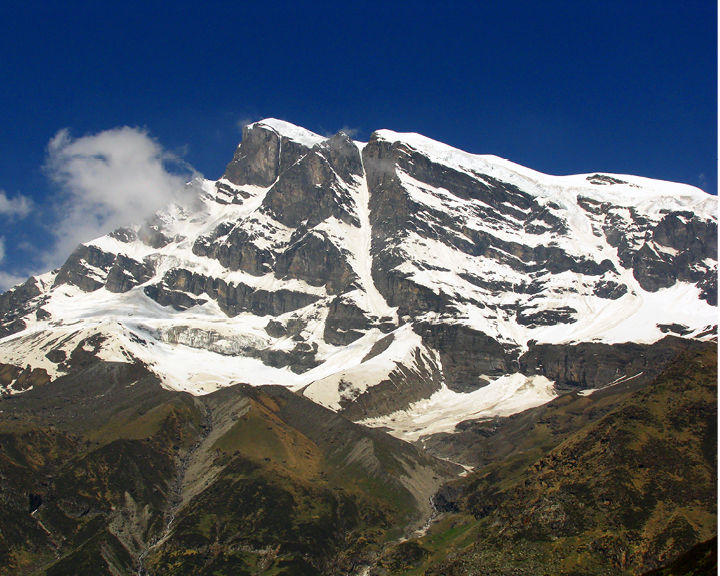
The trek turns serious after Khati. One needs to gain lost height and as we move up-slope to Dwali 12 km away, the river sings below. Bamboo groves whisper in the wind and boulders sometimes stand sentinel along the narrow path; the vegetation is still fresh but different. Signboards with safety instructions and brightly painted seats are an indication that the Asian Development Bank has invested in improving the journey. The government run KMVN guest house at Dwali stands across the river as it rushes deep. The 2013 deluge took away the high bridge, so we scramble over rocks strewn by the landslide and cross two bamboo bridges. A last climb and we are in the verandah of the place that will harbour us for the night. No peaks here to view. But the destroyed mountain opposite has its own stories to tell as we munch on hot spicy pakoras by lantern light. The government guest houses we have been staying in are basic and get more so as we get closer to our destination. In earlier years, we would get two hours of generator-driven electric power to charge our phones, which have been pressed into camera duty, but this year a sole solar torch and power banks are our only options.
From Dwali, a hiker has two options. We turn down the idea of visiting Kafni Glacier, a day’s journey with a mandatory night halt, as Pindari beckons. By now I have built up a walking rhythm and can even hum a tune under my breath as I climb from Dwali to Phurkia 5 km up-slope. From Phurkia it makes sense to press on to the Pindari Valley so we can pitch up tents rather than bed down in a decrepit room that desperately needs some housekeeping. But the seven-kilometre stretch proves to be a bit of a challenge. Seven or eight ice rivers slant vertiginously across, making crossing a slow process, and often steep and crumbling mud paths confront our courage.
The Pindari Valley (3,660 metres) is a joy to behold. Well worth the days of walking, it is an end to a trail that justifies its existence. We camp on green slopes with the glacier behind us, sparkling in the sun. The night will be cold, the guide warns. But there is succor at hand.
Pindari Valley is where Swami Dharmanand, a veteran sage, has built his temple and where he lives while the weather ensures the place is habitable. His is an amazing story of devotion and self-reliance and though I have heard it at least on two trips, his account of how he carved the sacred Shiv Ling (which represents Hindu Lord Shiva) that is now housed in his temple, out of the surrounding rock, never loses its charm. Living on a sparse diet himself, he offers visiting tourists with puris and potato curry and can hand out surprises like chocolate and Bournvita along with extra blankets, should a request be made for the latter. This year, though, the Swami is living a humbled existence. The deluge has impacted his abode, caving in part of his underground temple, forcing him to seal a part of it. Even his rituals have been curtailed he says, and the glorious golden-hued idol of goddess Parvati and god Ganesha we had marvelled at is now hidden away safely.

The rain is a reality at Pindari and thunderstorms can rock the tents. On our first trip it soaked right through to wet clothes and bags, and left us shivering! A pilot looking down would have seen spread-eagle shirts and sweaters and flapping trouser legs vying for the morning sunlight, which luckily always turns up on schedule.
The highlight of being in Pindari is the day trip to Zero Point—a steady, somewhat steep climb to the high point from where the glacier seems close enough to touch. But touch it we cannot, as deep gorges lie in between preventing all but the most intrepid from attempting to cross it. Locals do so of course, but we give it the respect that is its due.
Two days of sheltering in the embrace of snowy mountains with the glacier as a backdrop, and it is time to roll up the tents and head back. A line of sombre sheep crosses us as we start our descent. Perhaps they wonder why we wish to leave a place as idyllic as this. A stopover at Anpona however, is pleasant, and we sing film and local songs along with the guide and his team around a bonfire. We save a day’s walking by taking a 4×4 from Khurkiya and driving on the new road that takes us via Song to Bageshwar. Uneventful though it is, the walk back is tinged with the foreknowledge that the heat of summer awaits us in the plains. Yet, it is better to have loved and lost they say, than never to have loved at all and that is true of mountain lovers too.
In fact, even as Delhi bakes at 46.5° Celsius as I write this, and I am waiting at the airport to fly back home to Mumbai, I am mulling over the guide’s statement that Kafni is a safe place to visit in early winters. A winter trek! Will it be as good? Or better? That, again, will be a new story.
Related: Bucket-List Material: Experience A Rail Journey In Switzerland On The Glacier Express


